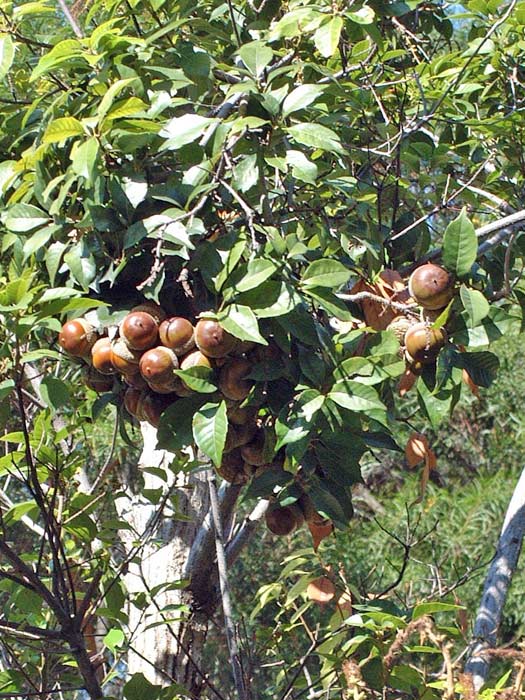Lithocarpus konishii
The Konishi tanoak stands out among Taiwan’s rich and diverse forest flora for its distinctive and endearing fruit. Each acorn can reach up to 5 centimeters in diameter and is characterized by a rounded, plump body topped with a cupule that resembles a small hat-giving the appearance of a chubby child wearing a cap. Because of their charming form and sturdy texture, the fruits have inspired artisans and craft enthusiasts to create earrings, necklaces, and other handmade accessories. These works, infused with creativity and rustic natural beauty, celebrate the connection between nature and art.
Beyond their aesthetic appeal, the fruits of the Konishi tanoak play a crucial role in forest ecosystems. They provide an important food source for wildlife, particularly small mammals such as squirrels, which feed on the nutritious nuts and help disperse the seeds through their foraging activities. This interaction exemplifies the mutual relationship between plants and animals that sustains the balance and regeneration of forest habitats.
The Konishi tanoak was once considered endemic to Taiwan. The type specimen was collected in 1906 by Japanese botanist Nariaki Konishi from the Toukoshan area, now part of Taichung City. The species is primarily distributed in lowland broadleaved forests across central, southern, and eastern Taiwan, and is also found on Hainan Island in China, where it grows in coastal shrublands on gentle slopes. Because it is native to low-altitude regions close to human settlements, it is well-suited for use as an ornamental tree and is commonly planted in parks, green spaces, and school campuses.
At the National Museum of Natural Science, Konishi tanoaks are cultivated on the circular hill in the Central Lowland Area of the Botanical Garden. Here, they serve as representative species of central Taiwan’s evergreen broadleaved forests, allowing visitors to appreciate both the ecological and cultural significance of this charming native tree.

